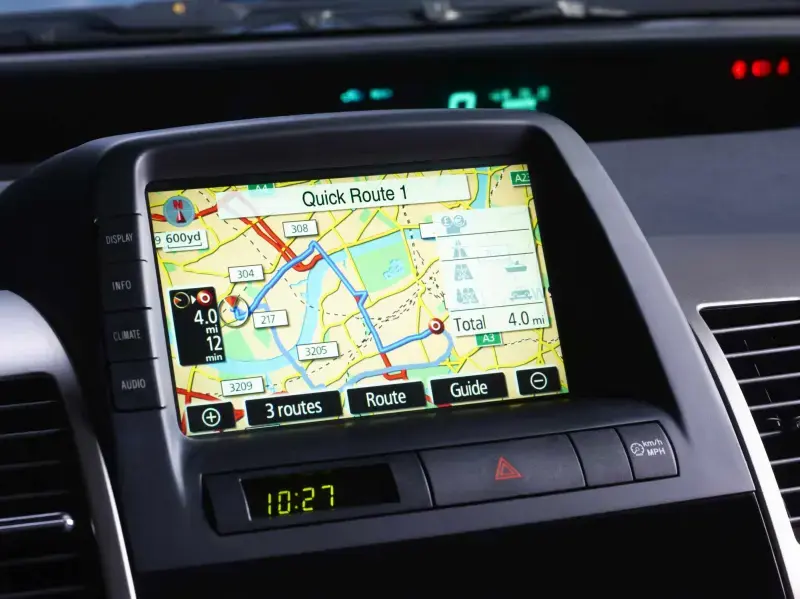Future Trends in Smart Car Navigation Systems: Transforming Routes and Journeys
The automotive industry is undergoing a significant transformation, with smart car navigation systems at the forefront of this evolution. These advanced systems are poised to redefine how drivers plan routes and experience journeys, integrating cutting-edge technologies to enhance safety, efficiency, and convenience.

Integration of Artificial Intelligence in Navigation
Artificial Intelligence (AI) is becoming integral to modern navigation systems. By analyzing vast datasets, AI can predict traffic patterns, suggest alternative routes, and provide real-time updates, leading to more efficient travel. For instance, AI-driven navigation can adapt to sudden changes in traffic conditions, offering dynamic rerouting to avoid congestion. This adaptability ensures that drivers receive the most efficient route recommendations, reducing travel time and fuel consumption.
Augmented Reality Enhancements
Augmented Reality (AR) is set to revolutionize in-car navigation by overlaying digital information onto the real-world view. AR can display navigation cues directly on the windshield, highlighting the correct lanes, upcoming turns, and points of interest. This hands-free approach minimizes distractions, allowing drivers to keep their eyes on the road while receiving essential information. Companies are developing AR navigation systems that project route-related information into the driver's line of sight, enhancing situational awareness and safety.
Seamless Connectivity and Integration
The future of navigation lies in seamless integration with other vehicle systems and external devices. Connected vehicles can communicate with infrastructure and other cars to receive real-time updates on road conditions, accidents, and weather. This connectivity enables navigation systems to provide timely alerts and suggest optimal routes, enhancing safety and efficiency. Additionally, integration with smart home devices allows drivers to sync their schedules and preferences, creating a personalized driving experience.
Advancements in Autonomous Navigation
As autonomous vehicles become more prevalent, navigation systems are evolving to meet their unique requirements. These systems must process complex data from various sensors to navigate safely without human intervention. High-definition maps, real-time data processing, and machine learning algorithms are essential components of autonomous navigation, enabling vehicles to understand and react to their environment accurately. The development of autonomous driving technology is expected to create significant revenue opportunities in the coming years.
Enhanced User Interfaces
User experience is a critical aspect of navigation systems. Future interfaces will focus on intuitive design, voice control, and customization. Voice-activated navigation allows drivers to input destinations and receive directions without manual interaction, reducing distractions. Customizable interfaces enable users to tailor the display according to their preferences, ensuring that essential information is easily accessible. These enhancements aim to make navigation systems more user-friendly and responsive to individual needs.
Environmental Considerations
Modern navigation systems are incorporating eco-friendly features, such as suggesting routes that minimize fuel consumption and emissions. By analyzing traffic conditions and terrain, these systems can recommend paths that are not only time-efficient but also environmentally conscious. This approach aligns with the growing emphasis on sustainability in transportation, helping drivers make choices that benefit both themselves and the environment.
Challenges and Considerations
While the future of smart car navigation systems is promising, their development and adoption are not without challenges. Understanding these obstacles is crucial to achieving widespread implementation.
1. Data Privacy and Security
Smart navigation systems rely heavily on data, including real-time location, driving habits, and vehicle diagnostics. While this data is essential for improving functionality, it raises concerns about privacy and security. Unauthorized access to such sensitive information could lead to data breaches or misuse. Manufacturers must prioritize robust cybersecurity measures and transparent data handling practices to build trust among users.
2. Infrastructure Limitations
Advanced navigation systems often depend on well-maintained infrastructure, such as connected roadways and reliable internet coverage. In regions with poor connectivity or outdated infrastructure, these systems may not perform optimally. Governments and private entities need to collaborate to create smart cities that support the seamless operation of connected vehicles and navigation technologies.
3. Cost and Accessibility
The initial cost of implementing advanced navigation technologies can be a barrier for manufacturers and consumers alike. Developing high-precision sensors, integrating AI, and maintaining cloud-based services involve significant expenses. To ensure broader adoption, it is essential to create cost-effective solutions and offer these technologies in various vehicle segments, not just premium models.
4. Regulatory Hurdles
The development of new technologies often outpaces the creation of regulations to govern their use. Navigation systems, especially those integrated with autonomous vehicles, must comply with local traffic laws and safety standards. Collaboration between regulatory bodies and industry stakeholders is critical to create a framework that encourages innovation while ensuring public safety.
The evolution of smart car navigation systems is set to transform driving experiences by integrating AI, AR, seamless connectivity, and user-centric designs. These advancements will lead to more efficient, safe, and personalized journeys, marking a significant step forward in automotive technology. As these systems continue to develop, drivers can look forward to a future where navigation is more intuitive and responsive to their needs.
Articles
Subscribe to our email notifications to stay informed about the most recent and interesting articles.